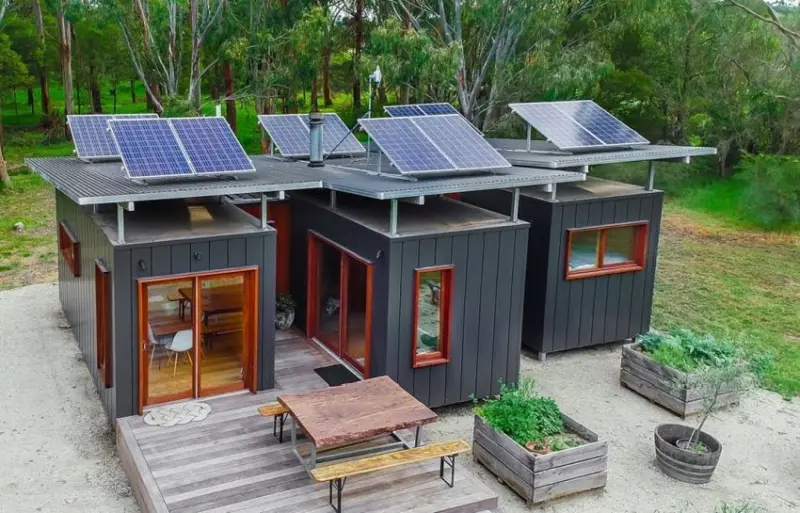In recent years, there has been a growing trend towards eco-friendly and sustainable living solutions, and one of the most innovative and intriguing developments in this realm is the transformation of shipping containers into eco-friendly homes. These repurposed containers offer a unique and practical way to create comfortable living spaces while minimizing environmental impact. Let’s delve into the world of container architecture and explore how these structures are redefining the concept of sustainable living.
The Rise of Container Homes
Shipping container homes have gained popularity for several compelling reasons. First and foremost, they represent a form of recycling and upcycling that reduces the environmental footprint associated with traditional construction methods. By repurposing decommissioned shipping containers, which would otherwise languish in ports or scrapyards, we can give them a new lease on life as functional and stylish homes.
Moreover, container homes offer a relatively quick and cost-effective building solution. Compared to traditional construction, the modular nature of containers allows for streamlined assembly on-site, potentially reducing construction time and labor costs. This efficiency aligns with sustainable principles by conserving resources and minimizing waste.
Eco-Friendly Features
One of the key attractions of shipping container homes is their compatibility with sustainable practices. These homes can be equipped with a range of eco-friendly features to minimize energy consumption and promote a greener lifestyle. For instance, passive solar design techniques can be employed to optimize natural light and heat, reducing the need for artificial lighting and heating systems.
Additionally, container homes can be outfitted with high-quality insulation and energy-efficient appliances to further enhance their environmental performance. Rainwater harvesting systems and composting toilets are also popular additions, enabling residents to minimize water usage and manage organic waste sustainably.
Design Flexibility and Innovation
Container architecture offers immense design flexibility, allowing homeowners and architects to unleash their creativity while adhering to sustainable principles. Containers can be stacked or arranged in various configurations to create multi-story dwellings or expansive living spaces. The industrial aesthetic of shipping containers can be retained or transformed to suit different architectural styles, from minimalist to contemporary or even rustic.
Furthermore, container homes can easily integrate with renewable energy technologies like solar panels or wind turbines, enabling residents to generate clean energy on-site. This integration of sustainable design elements underscores the potential of container homes as fully functional, off-grid sanctuaries.
Challenges and Considerations
While container homes offer numerous benefits for eco-conscious individuals, there are also challenges and considerations to navigate. Adequate insulation and ventilation are crucial to ensure comfort and energy efficiency, especially in extreme climates. Additionally, addressing zoning regulations and building codes is essential to ensure that container homes meet safety standards and legal requirements.
Maintenance is another aspect to consider. Proper rust prevention and periodic inspections are necessary to preserve the structural integrity of shipping containers over time.
Conclusion
In conclusion, transforming shipping containers into eco-friendly homes represents a compelling solution for sustainable living. These innovative structures combine recycling, efficiency, and design creativity to offer comfortable and environmentally responsible living spaces. From reducing waste and energy consumption to promoting self-sufficiency and renewable energy, container homes exemplify the ethos of green living in the modern age. As interest in sustainable housing continues to grow, container architecture stands out as a practical and inspiring pathway towards a more eco-friendly future.
 عربي
عربي عربي
عربي